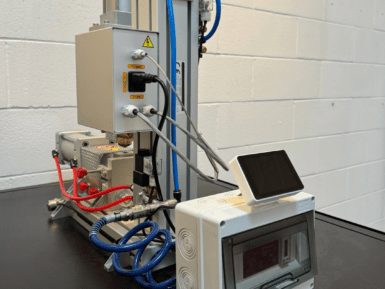
Overview
The sensor consists of an IR LED and a photo sensor (phototransistor). The light emitted by the IR LED gets reflected by any object placed in front of the sensor and this reflection is detected by the photo sensor (phototransistor). Any white (or lighter) colored surface reflects more than black (or darker) colored surface.
When the reflected light is detected, it produces Digital HIGH (or Binary 1) output on the Sig pin. The on-board LED indicator will also glow. If no reflection is detected or if the object is too far from the sensor, the output on the SIG pin stays at Digital LOW (Binary 0). The on-board LED indicator will be off as well.
The detectable range of this sensor is 4–16 mm. The module incorporates a Rail-to-Rail Operational Amplifier to amplify the output of phototransistor. There is a potentiometer which can be used to adjust the gain of the amplifier, that is, sensitivity of detection.
Get Inspired

… and equipment status from anywhere with an Internet connection. Additionally, the Arduino Opta WiFi is equipped with RS485 communication capabilities, enabling seamless integration with an external power meter – in our case, a Finder model. This provides valuable insights into energy consumption, production output, material usage, and equipment health. The collected data is then analyzed through dedicated dashboards, offering information about operational efficiency and potential issues. By leveraging this data, businesses can proactively schedule maintenance and repairs, minimizing downtime and optimizing production processes. Retrofitting for a connected future Many businesses today can retrofit existing machinery to embrace the benefits of connectivity and automation. Our demo provides a practical example of how common industrial equipment can become smarter, more efficient, and easier to manage. From remote monitoring and control to power metering and predictive maintenance, retrofitting offers a sustainable way to modernize industrial infrastructure. Unlocking potential across industries Moreover, the versatility of Arduino’s open-source ecosystem ensures that this solution can be adapted and applied to a wide range of existing machines and equipment, enhancing their operation effectively – whether in manufacturing, logistics, or any other industry relying on machinery. To learn more about how you can leverage Arduino technology to upgrade your infrastructure and achieve tangible results, contact us today. Let us help you unlock the full potential of your industrial assets with practical, cost-effective solutions.







